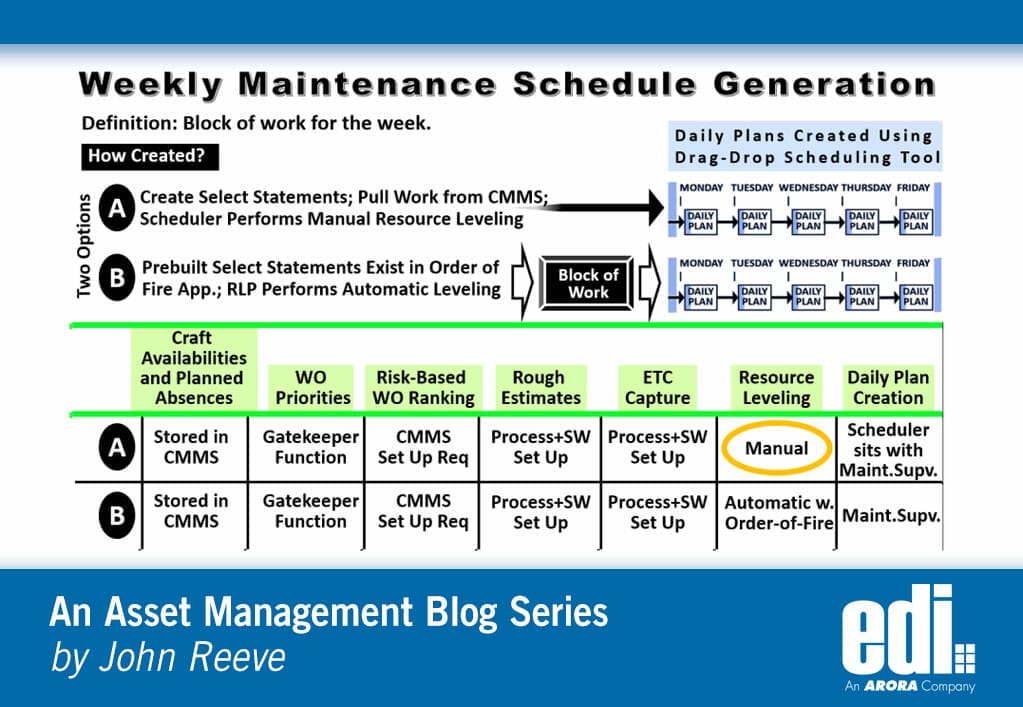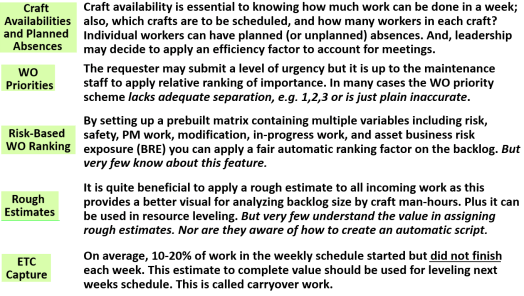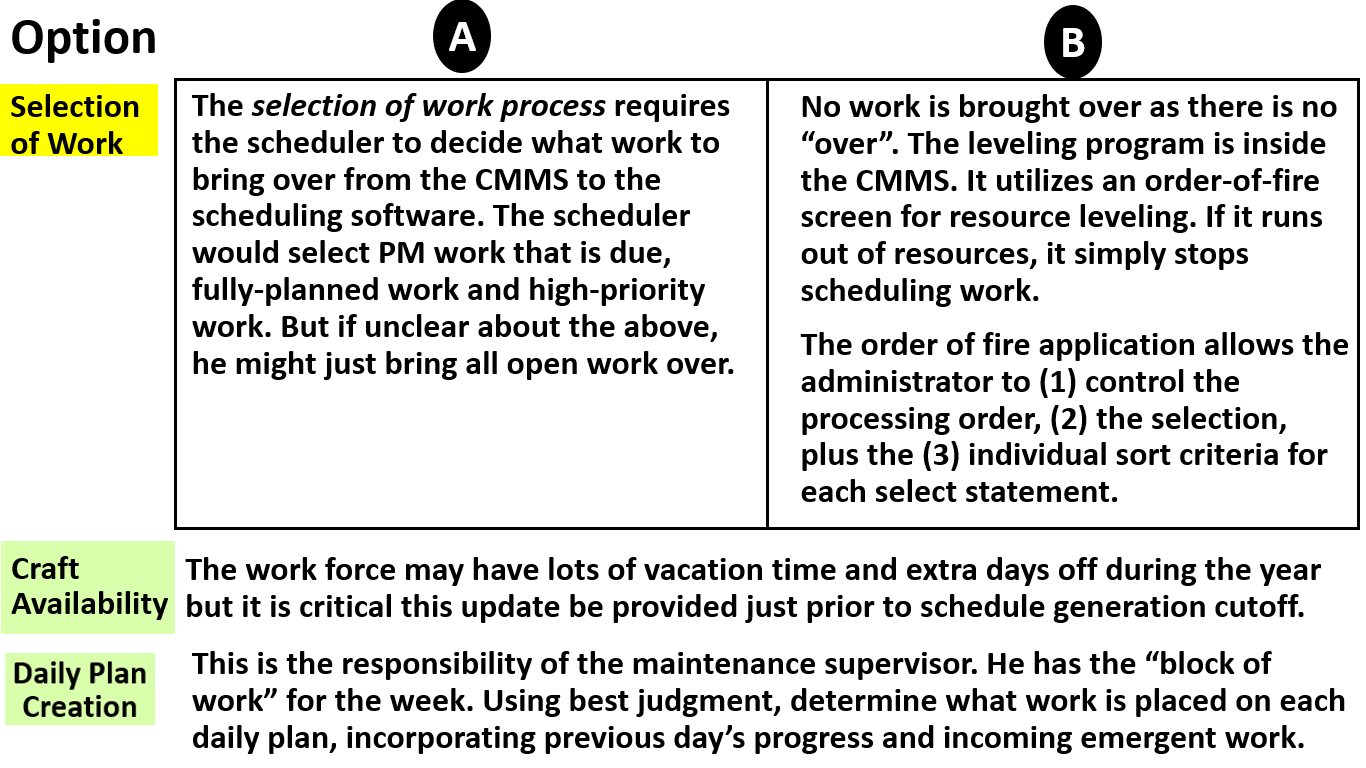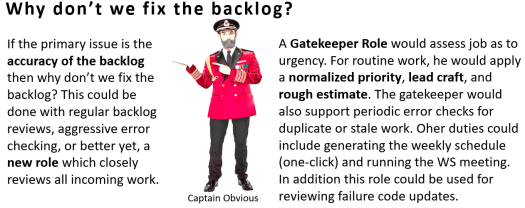
Resource leveling is a key step in the maintenance process. Organizations decide to either perform a manual process (20 man-hours per week) or an automatic process (2 minutes).


If the creation of the Daily Plan is basically a “sit down” between the scheduler and the maintenance supervisor, this is called “subjective selection” – and a bad practice. This approach will likely not select work that was given high marks by risk-based prioritization algorithms, nor will it maximize craft utilization.
Answer: Not really sure. Perhaps he is the only one who can figure out how to make the drag-drop tool work. So, question number 2 is, “Why do we need a drag-drop tool to create a Daily Plan? We already performed resource-leveling for the week.”
Although Option A looks to be more glamorous, this is unnecessary time spent by the maintenance scheduler, sitting with each craft supervisor to pick and choose what work they want from the backlog. Not only are they figuring what work orders to choose, but also what day of the week and worker name.
The real roadblocks are:
And, because there are management KPIs in place, the supervisor may be under-scheduling the work force. There are also scheduling software limitations, such as:
All of the above discourages administrators from automating the weekly schedule process.


The percentage of organizations who even try to make a weekly maintenance schedule is less than 20%. Hence this final thought: There are probably more people who have bought the Maintenance Planning and Scheduling book than who have successfully implemented maintenance weekly scheduling. Isn’t it time to provide a common-sense solution that could have a dramatic impact on all industries around the world?
© 2023 EDI